(292) White dogs at Itabashi Fudoson
文字数 3,640文字
Itabashi Fudosan (板橋不動尊), located in Tsukubamirai City, a neighboring city of Tsukuba City, was founded in 808 by Kobo Daishi Kukai(弘法大師, 空海), and is one of the "Three Great Fudoson Temples of Kanto District," along with Narita Fudoson.
It is also the final destination of the 36 Fudoson pilgrimage in Kita-Kanto District. The official name of the temple is Seianzan Fudoin Ganjoin Fudoin of the Toyozan School of Shingon Buddhism (真言宗豊山派「清安山願成寺不動院(せいあんざん がんじょうじ ふどういん」).
Itabashi Fudoson's tower gate, three-story pagoda, and large main hall are designated cultural properties.
The tower gate was built in 1700 and underwent a three-year, semi-demolition repair in 2008.
The three-story pagoda was built in 1775 and was repaired for two years from 1993.
The main hall was built in 1737. The principal image of the "Honzon Fudo Myoo and Ryodoji," designated as a National Important Cultural Property, is located in the main hall, but can only be seen three times a year, on Jan. 28, Feb.3 (Setsubun), and Nov. 28.
There is a legend of white dogs (oinu-sama) at Itabashi Fudoson.
In the old days of Edo (1603-1867), in Sanno Shinden (which is present-day Tsukubamirai City), there were many difficult births where both mothers and children died, and women were worried if they got pregnant.
One night, a male and a female white dog appeared in the village head's dream and said, 'We are messengers of Itabashi Fudo. If all the women come together to pray for the Fudoson and perform the Goma prayers, they will be saved from the pain of a difficult delivery."
(※Goma prayer, started in India, is a sacred ritual of esoteric Buddhism, in which the Goma wood is thrown into the fire to ask for protection.)
The next morning, all the women who had gathered at the shrine paid homage to Fudo, performed the Goma prayers, and dedicated a pair of white dogs as the messengers of Fudo. After that, no women in the village suffered from difficult childbirth. Since then, Itabashi Fudo-sama has also been called Inu Fudo-sama.
Komainu (guardian dogs) are often seen at shrines and temples. Komainu are not dogs, but imaginary animals of lion origin, brothers of the sphinx.
Itabashi Fudoson doesn't have komainu, but there are five white dogs that symbolize safe delivery, so I went to see the white dogs.
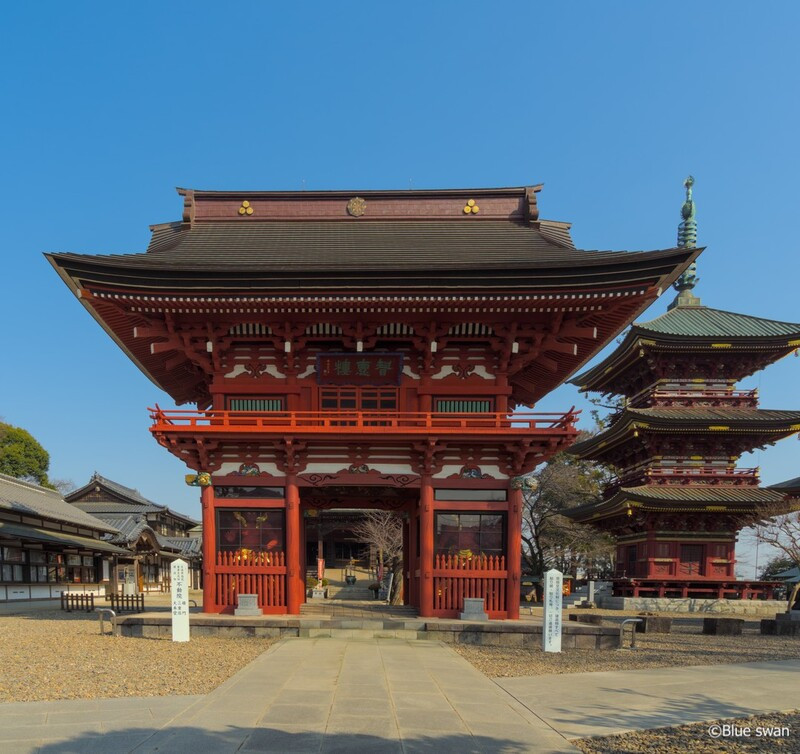
① When you enter the grounds, you can see the two-story gate in front and the three-story pagoda on the right. The gate has a pair of Nio statues.

②The cherry blossoms in front of the tower gate are beautiful. Maybe they are Kanzakura (寒桜).

③These are also Kanzakura.
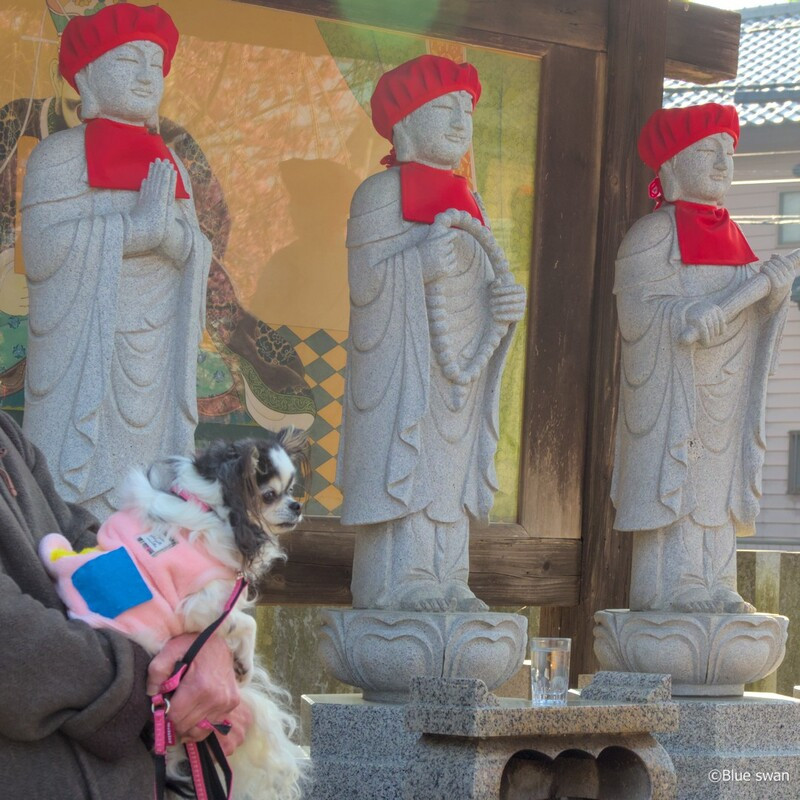
④ Next to the cherry blossoms are Jizo (Rokujizo六地蔵).

⑤ When you pass through the tower gate, there is a pair of legendary white dogs. This is the left statue.

⑥ This is the statue on the right, facing you, with its mouth open.
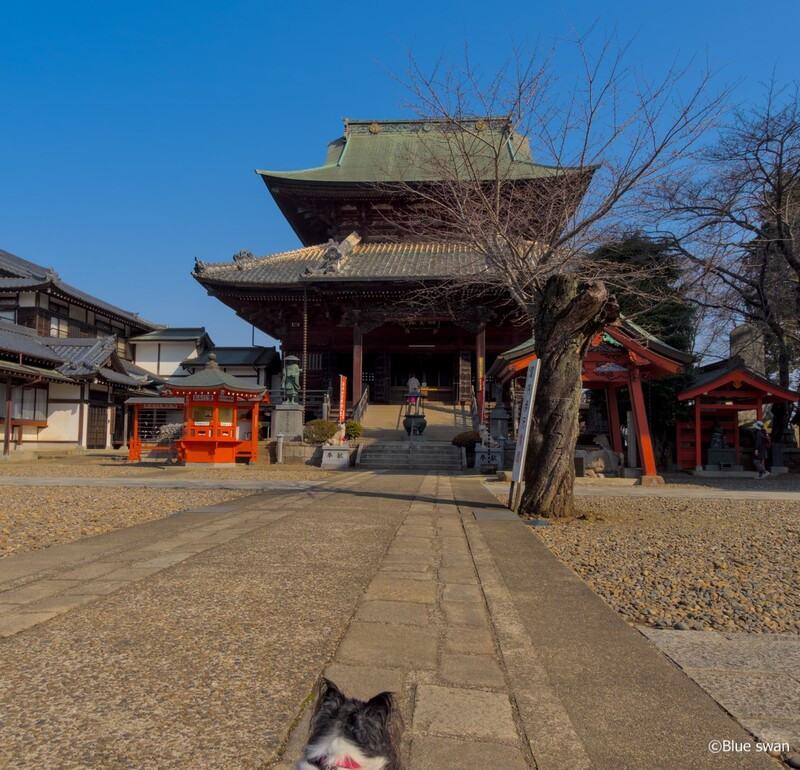
⑦ As you walk along the path to the shrine, you can see the main hall.
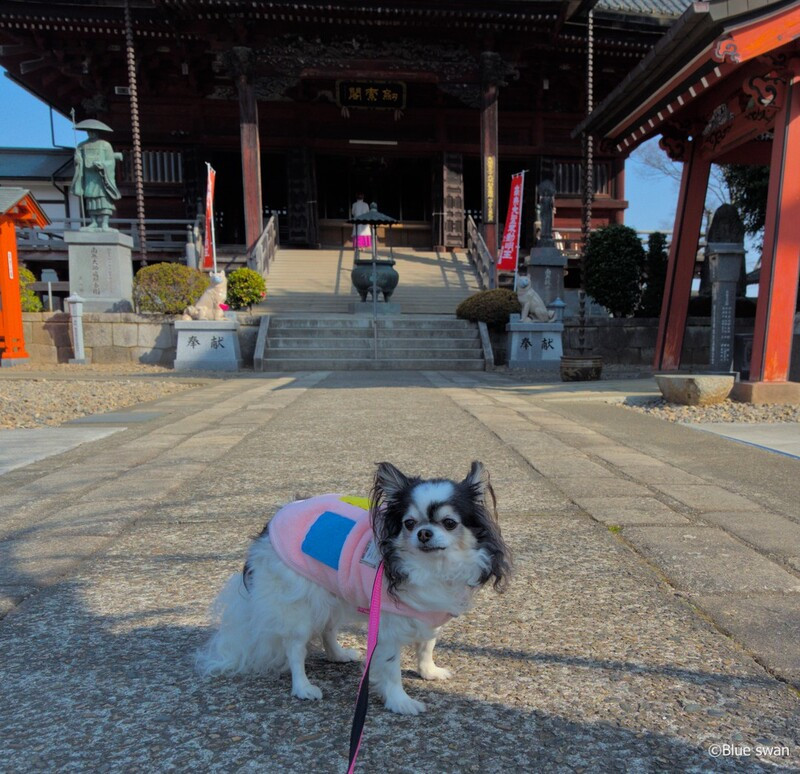
⑧ If you go further, you can see the statue of Kobo Daishi on the left, a large incense burner in the center, and white dogs on the left and right of the stairs.
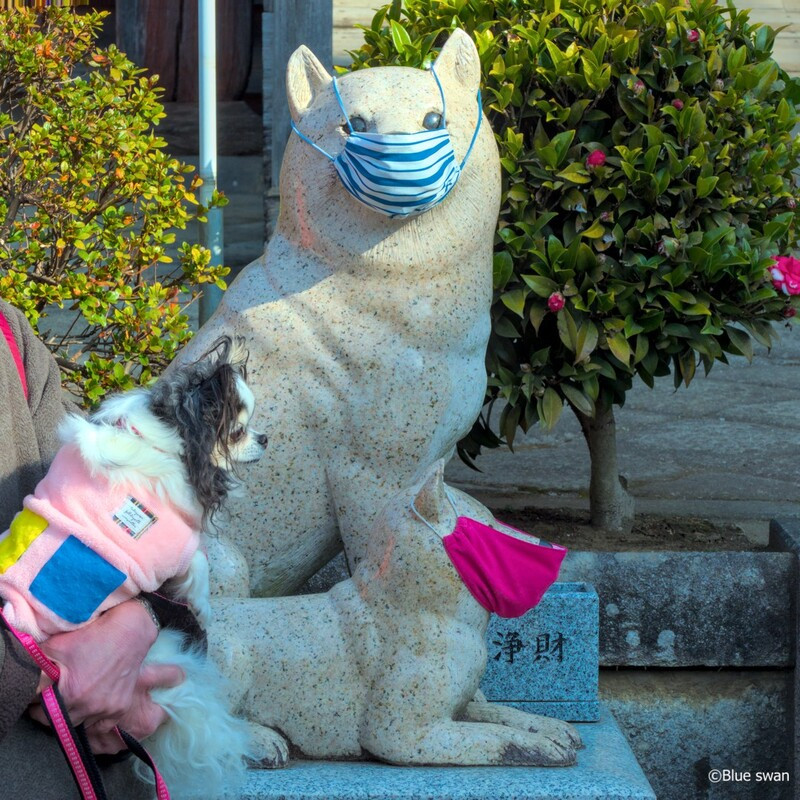
⑨ On the left are a parent dog and a child dog. Some people call them Shiba Inu.

⑩ This is the white dog on the right. The hemisphere-shaped stone is said to be a breast.
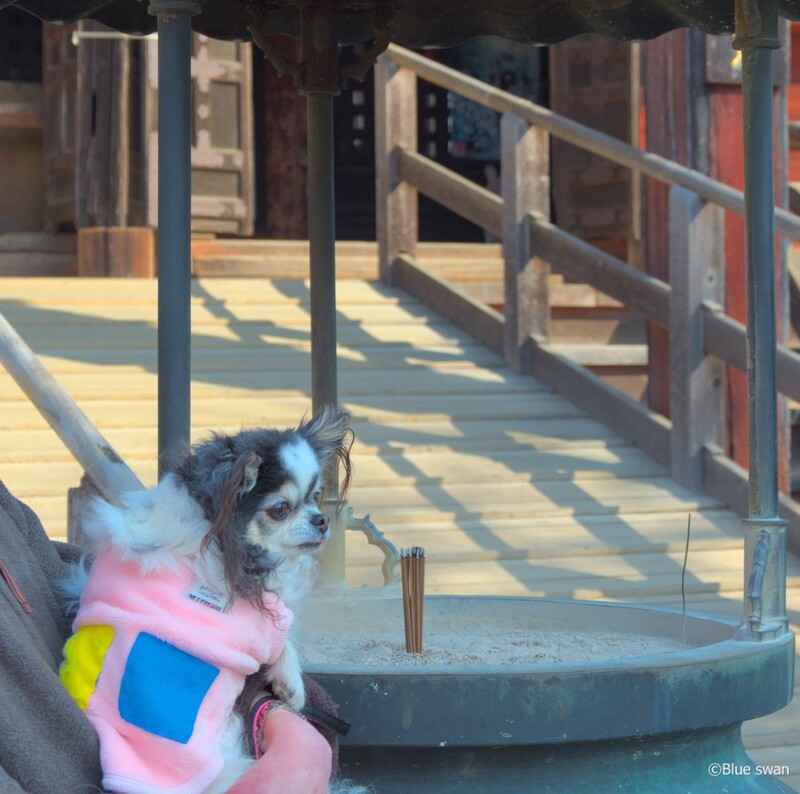
⑪ I’m in front of a large incense burner.
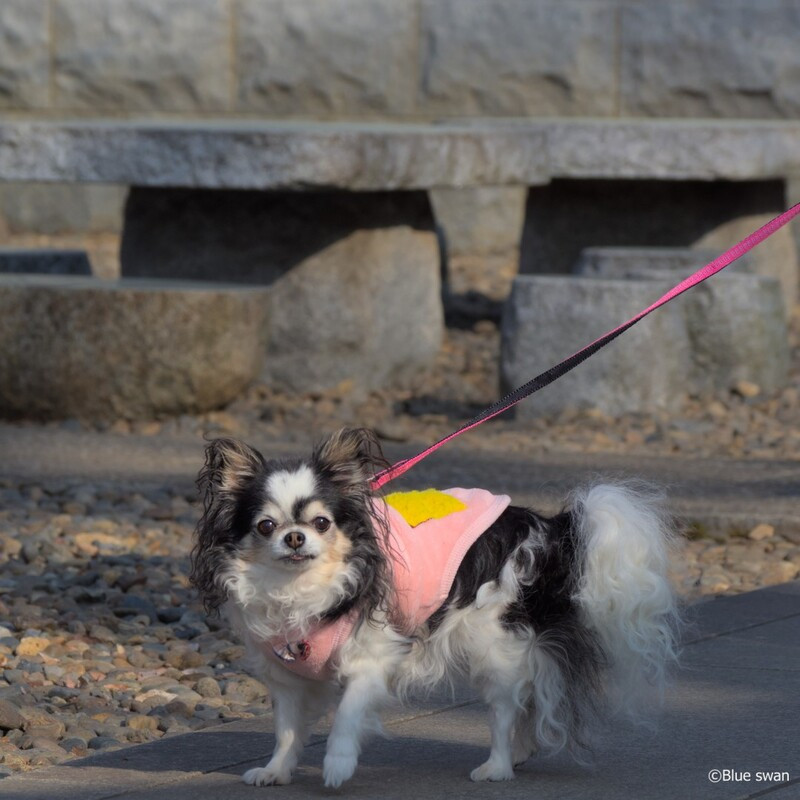
⑫ I’ve started taking a walk after seeing the main hall.
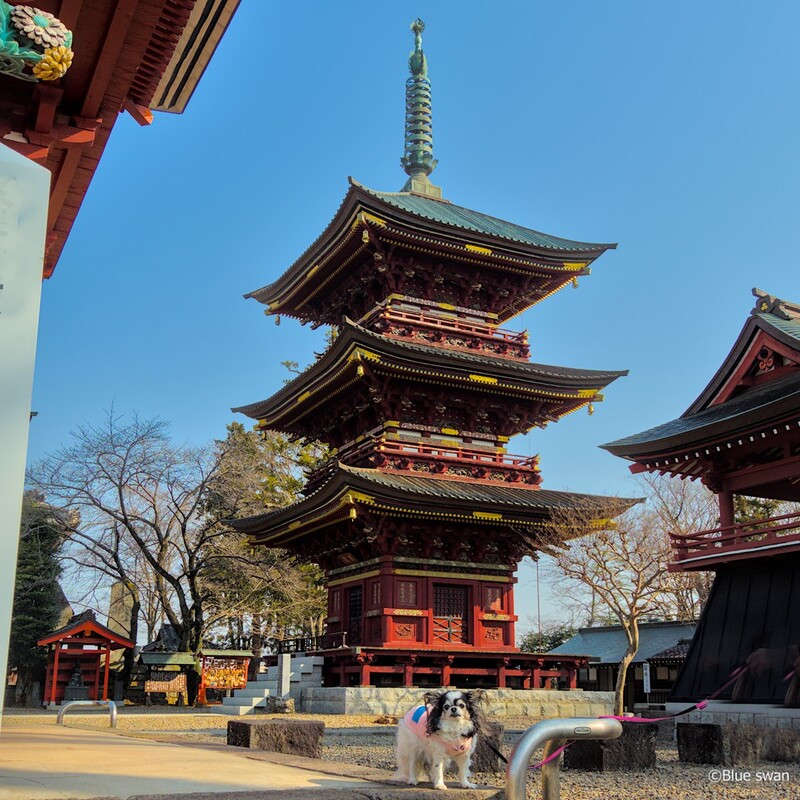
⑬ I came in front of the three-story pagoda.
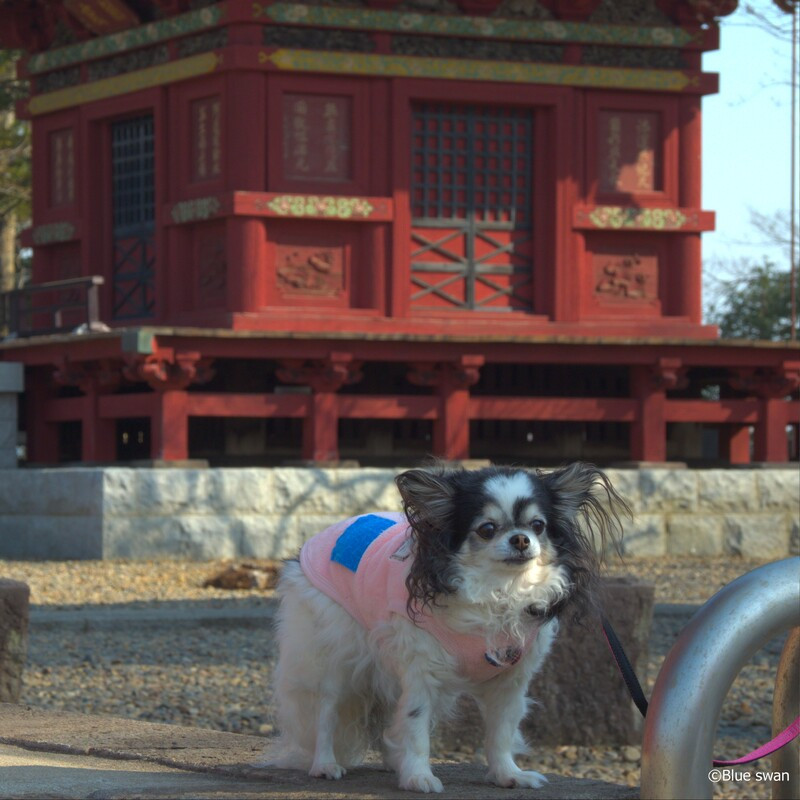
⑭ This is a close-up photo of ⑬.

⑮ I’m strolling by the main hall.
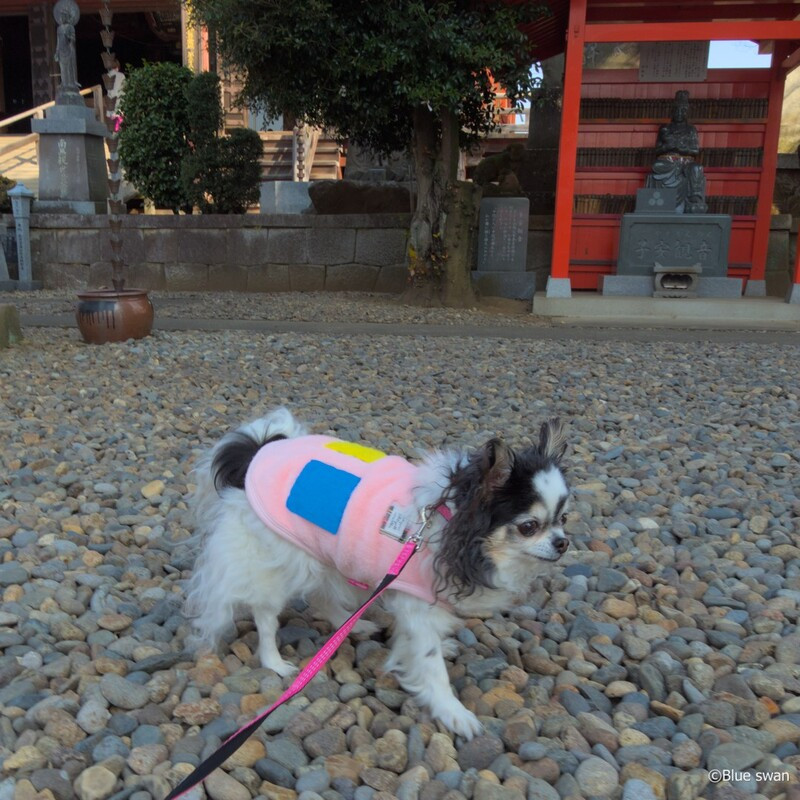
⑯ I’m walking in front of Koyasu Kannon (Avalokiteshvara Bodhisattva, who protects the safe delivery of pregnant women and the safe growth of infants).
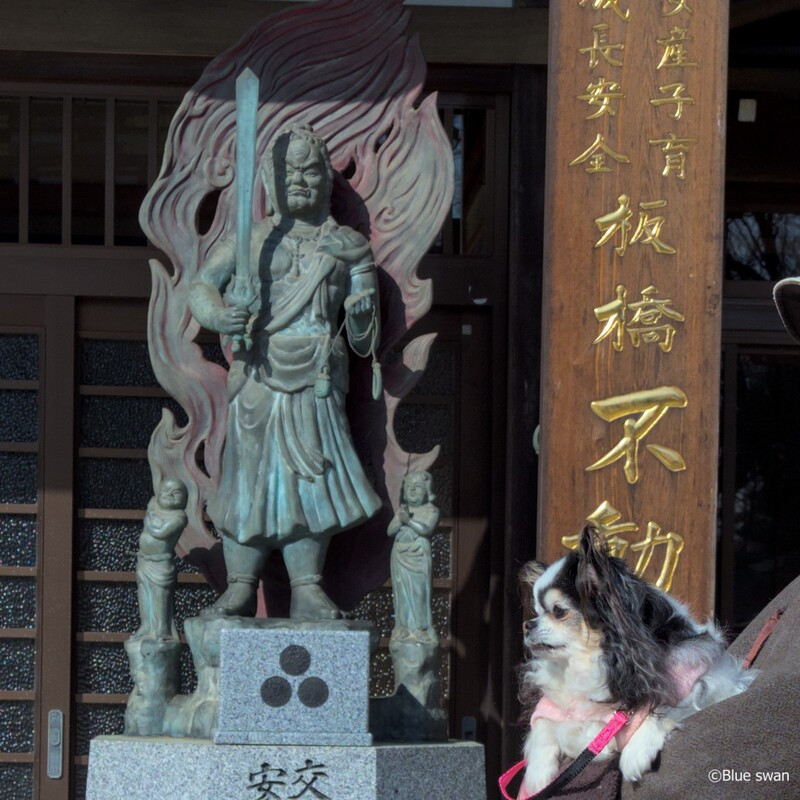
⑰ This is a traffic safety statue of Fudo Myoo (Acalanatha).
It is also the final destination of the 36 Fudoson pilgrimage in Kita-Kanto District. The official name of the temple is Seianzan Fudoin Ganjoin Fudoin of the Toyozan School of Shingon Buddhism (真言宗豊山派「清安山願成寺不動院(せいあんざん がんじょうじ ふどういん」).
Itabashi Fudoson's tower gate, three-story pagoda, and large main hall are designated cultural properties.
The tower gate was built in 1700 and underwent a three-year, semi-demolition repair in 2008.
The three-story pagoda was built in 1775 and was repaired for two years from 1993.
The main hall was built in 1737. The principal image of the "Honzon Fudo Myoo and Ryodoji," designated as a National Important Cultural Property, is located in the main hall, but can only be seen three times a year, on Jan. 28, Feb.3 (Setsubun), and Nov. 28.
There is a legend of white dogs (oinu-sama) at Itabashi Fudoson.
In the old days of Edo (1603-1867), in Sanno Shinden (which is present-day Tsukubamirai City), there were many difficult births where both mothers and children died, and women were worried if they got pregnant.
One night, a male and a female white dog appeared in the village head's dream and said, 'We are messengers of Itabashi Fudo. If all the women come together to pray for the Fudoson and perform the Goma prayers, they will be saved from the pain of a difficult delivery."
(※Goma prayer, started in India, is a sacred ritual of esoteric Buddhism, in which the Goma wood is thrown into the fire to ask for protection.)
The next morning, all the women who had gathered at the shrine paid homage to Fudo, performed the Goma prayers, and dedicated a pair of white dogs as the messengers of Fudo. After that, no women in the village suffered from difficult childbirth. Since then, Itabashi Fudo-sama has also been called Inu Fudo-sama.
Komainu (guardian dogs) are often seen at shrines and temples. Komainu are not dogs, but imaginary animals of lion origin, brothers of the sphinx.
Itabashi Fudoson doesn't have komainu, but there are five white dogs that symbolize safe delivery, so I went to see the white dogs.

① When you enter the grounds, you can see the two-story gate in front and the three-story pagoda on the right. The gate has a pair of Nio statues.

②The cherry blossoms in front of the tower gate are beautiful. Maybe they are Kanzakura (寒桜).

③These are also Kanzakura.

④ Next to the cherry blossoms are Jizo (Rokujizo六地蔵).

⑤ When you pass through the tower gate, there is a pair of legendary white dogs. This is the left statue.

⑥ This is the statue on the right, facing you, with its mouth open.

⑦ As you walk along the path to the shrine, you can see the main hall.

⑧ If you go further, you can see the statue of Kobo Daishi on the left, a large incense burner in the center, and white dogs on the left and right of the stairs.

⑨ On the left are a parent dog and a child dog. Some people call them Shiba Inu.

⑩ This is the white dog on the right. The hemisphere-shaped stone is said to be a breast.

⑪ I’m in front of a large incense burner.

⑫ I’ve started taking a walk after seeing the main hall.

⑬ I came in front of the three-story pagoda.

⑭ This is a close-up photo of ⑬.

⑮ I’m strolling by the main hall.

⑯ I’m walking in front of Koyasu Kannon (Avalokiteshvara Bodhisattva, who protects the safe delivery of pregnant women and the safe growth of infants).

⑰ This is a traffic safety statue of Fudo Myoo (Acalanatha).
